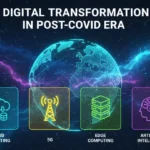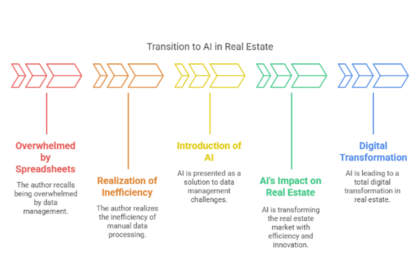R&D (research and development) is a department within a company that focuses on generating new ideas, implementing new technologies, and developing new products or improving existing ones. An effective R&D department brings business value through technological breakthroughs, process optimization, and new opportunities for growth, serving as the company’s driving force.
Sometimes these teams are completely absent or formed ineffectively, which hinders company development. Common mistakes when forming and launching an R&D team can be outlined as:
- Unclear goals: lack of connection between R&D roles and business strategy.
- Poor organization structure: chaos in processes and responsibilities.
- Resource underestimation: lack of funding, time, or technology.
- Ignoring culture: when ideas aren’t openly discussed, the team loses effectiveness.
In this article, we’ll examine what is an R&D team, what roles exist, how to build the right organization structure, and provide advice for creating a truly effective department.
First Steps in Creating an R&D Team
Any strong R&D department begins not with hiring people, but with a plan. Sit down and honestly assess what your company already has: whether you have the necessary resources, specialists, technologies, or whether you’ll need to source them externally. Think about what is an R&D team means specifically for you: will it be searching for breakthrough ideas for new products or optimizing existing solutions?
Next, define specific expectations. It’s important for business to know what the money is being invested in: new product lines, patents, reducing development cycles, or improving quality. Clear KPIs immediately set focus and help assemble a team with the right skills.
Don’t ignore the external context either. Study your target audience, market trends, and technological capabilities. This will suggest which direction to move: build an R&D organization structure with your own resources, entrust part of the processes to outsourcing partners, or combine internal and external resources in a hybrid format.
Forming an R&D Department
R&D roles are extremely diverse and require a careful approach to selection. You’ll need researchers with deep technical knowledge, product managers, prototype engineers, and data analysts. However, team composition primarily depends on the business. Hard skills include expertise in relevant technologies for your product. Soft skills are equally important: creativity, ability to work with uncertainty, communication skills, and adaptability.
The R&D organization structure should promote team dynamics. There must be a leader who not only manages processes but also inspires the team, removes obstacles, and ensures connection with business goals. It’s important to create an environment where participants can freely exchange ideas and experiment. Investing in mentoring, development, and employee motivation wouldn’t be excessive.
There are also outsourcing agencies that take on the tasks of forming and implementing R&D teams. This opens many advantages for business:
- Teams can be formed much faster (on average in 3-5 weeks)
- Administration is cheaper, as such companies cover HR, legal, finance, and other associated costs
- Personnel selection is of higher quality, as agencies constantly form teams for different needs and businesses and have a large database of specialists
Solutions like Newxel’s Dedicated Team allow companies to obtain a ready R&D department with properly selected roles and configured organization structure. Thanks to experience in creating and supporting such teams, businesses can reach the required level faster and focus on product development.
Processes and Working Approaches
Choosing a work methodology critically affects R&D team effectiveness. Agile is a flexible approach that involves quick iterations, regular feedback, and constant adaptation to changes. This methodology works well for teams working on products with high market dynamics. Waterfall, on the other hand, is a sequential model where each stage is completed before moving to the next. It can be more effective for long-term fundamental research or projects with clearly defined requirements. In practice, the best results often come from a hybrid approach that combines Agile flexibility with Waterfall structure.
For work organization, consider implementing OKR (Objectives and Key Results) or other goal-setting systems. This will help align R&D roles with the company’s strategic tasks and ensure result transparency.
Special attention is needed for risk management and uncertainty, which are integral parts of R&D processes. Create a culture where failures are viewed as valuable experience, not failure. The R&D organization structure should also include mechanisms for quick hypothesis testing and reorientation when necessary.
Tools and Environment
A modern R&D department is impossible to imagine without the right tools. For daily communication, Slack, Microsoft Teams, or Notion work conveniently. Process and results documentation is convenient to maintain in Confluence or GitLab Wiki. And for prototyping, you’ll need both simple services for mockups and serious CAD systems.
But tools are not the foundation of success. The organizational environment is equally important. A successful R&D team lives in a culture of experimentation, where ideas aren’t afraid to be criticized and where there’s room for bold decisions, changing tools, and testing new approaches.
And, of course, top management support. Leadership should not only allocate budget, but also protect the team from unnecessary pressure, provide resources for testing, and support innovation culture by their own example.
Monitoring and Course Correction
R&D department success requires constant monitoring and adaptation. Establish a metrics system that includes both short-term indicators (number of experiments conducted, prototyping speed) and long-term ones (revenue impact, number of successful products).
When something doesn’t go according to plan, reaction speed is a key factor. R&D roles should provide flexibility in changing priorities and strategies. In this case, engaging a Dedicated Team is a clear advantage, as it allows for quick scaling or attracting additional niche specialists without process complications.
Regularly review the project portfolio and be ready to stop unpromising directions in favor of more promising ones.
Examples of Successful R&D Department Creation
Samsung built a global network of R&D centers, allowing them to use the best talents from around the world. Their R&D team works on the principle of open innovation, actively collaborating with universities and startups. This model demonstrates the importance of a global approach and opens eyes to the fact that your R&D doesn’t necessarily have to be in the neighboring office for effective work.
3M created a unique innovation culture with the “15% time” rule, where employees can spend part of their working time on personal projects. This solution was separately researched in a Wired article: “The 15 Percent Solution.” This allowed them to create thousands of patents and products. The lesson from their R&D organization structure: providing freedom for experimentation can bring unexpected breakthroughs.
Google divided its R&D efforts between core products and experimental projects. Their approach shows how an R&D team can mean different things for different types of innovation. Therefore, segmenting research by risk level and planning horizon can prove to be a very successful strategy.
Conclusion
Creating a successful R&D team is a long but confident path to developing your business that shouldn’t be neglected. It’s important to remember: the team can be either in-house or outsourced, but regardless of format, goals and expected results must be defined before formation begins.
Don’t limit yourself to one team if your business is quite large and has many goals. You can have several R&D teams for different products, directions, or even different risk levels of ideas. This approach increases flexibility and allows faster response to market challenges.
Try to implement at least one change today: more clearly define roles, update structure, or review goals. And if you feel you need professional support in creating an R&D department, consider collaborating with proven outsourcing companies that specialize in team building and will help construct an effective team from scratch.










